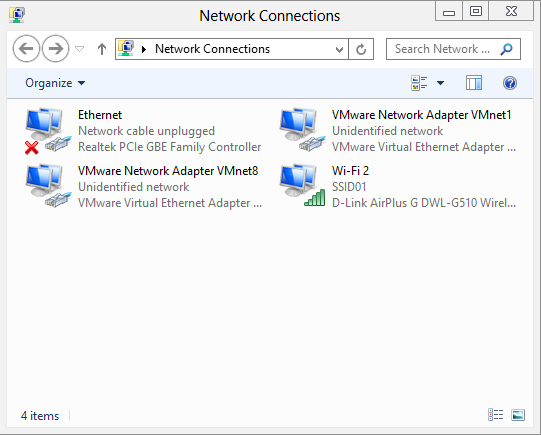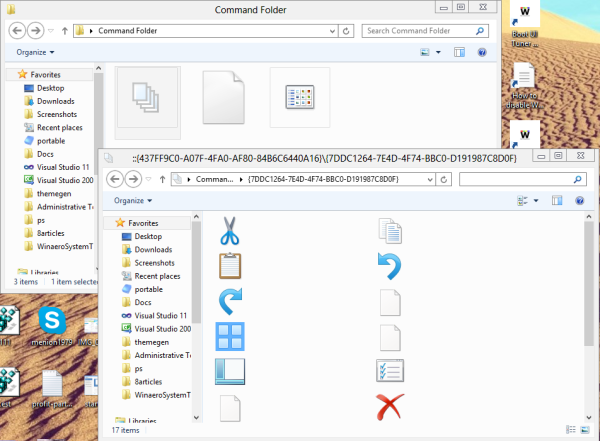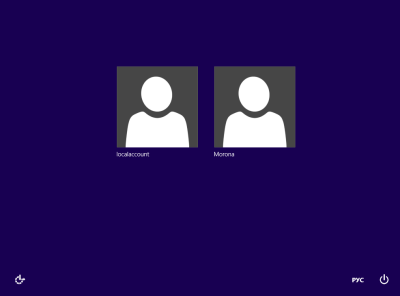With Windows 7 (or rather Windows Vista), Microsoft removed the classic display properties control panel from the Desktop context menu which quickly allowed you to change the desktop wallpaper. The Personalization item replaced it but you have to first open it and then click the Desktop Background item there to get to the page which lets you change the wallpaper. In this article, we will see how to add Desktop Background directly to the Desktop context (right-click) menu.
Category: Scripts and tweaks
How to view your product key in Windows 10, Windows 8 and Windows 7
If you lost or forgot where you had stored your Windows product key, I have a solution for you. Today we will see how a simple VBS script can be used to show us the product key of an installed copy of Windows 10, Windows 8 or Windows 7. It is a simple solution to extract your product key from the OS installed on your PC without using any third party software. Here we go.
Security tip: Protect your Windows product key from being stolen
Did you know that when Windows is installed, it continues to store your product key in the registry. This may be useful, if you don't remember which key you used on your current installation. Also if you lost your product key, this can be useful for recovering your product key with some third party tool or with a simple PowerShell script.
But at the same time, your Windows product key is at risk of being stolen. If you are concerned about your product key being stolen (i.e. with some malicious software), you might want to remove it from the registry permanently. This operation is safe and will not affect your OS activation status. Follow this simple tutorial to learn how you can erase the stored product key in Windows 8, Windows 8.1, Windows 7 and Windows Vista.
How to get the Windows product key without using third party software
If you lost, cannot retrieve or forgot where you had stored the product key of your Windows 8.1, Windows 8 or Windows 7 OS, do not despair. I would like to show you a simple solution to extract your product key from the OS installed on your PC without using any third party software.
The most comprehensive list of shell locations in Windows 8
There are lots of shell locations in Windows, that you can access via shell:::{GUID} commands from the "Run" dialog. They are also known as "Shell Folders". With each version of Windows, many new shell locations are added.
What are Shell Folders
Shell folders are ActiveX objects that implement a special virtual folder or a virtual applet. In some cases, they provide access to physical folders on your hard drive or even to special OS functionality like "Minimize all Windows" or the Alt+Tab switcher.
What you can do with Shell Folders
You can use them in various scenarios, but in the general case you can use them to create a shortcut to a specific Control Panel applet or a Windows feature. For example, the following command will open the "Network Connections" folder:
shell:::{7007ACC7-3202-11D1-AAD2-00805FC1270E}Note: Press Win+R keys on your keyboard, copy the command above and paste it in the "Run" dialog.
The following command will open Control panel always in "Category" view:
shell:::{26EE0668-A00A-44D7-9371-BEB064C98683}And the following command will open Control Panel in icon-view, either small or large, that was set by the user the last time he opened it.
shell:::{5399E694-6CE5-4D6C-8FCE-1D8870FDCBA0}There are lots of interesting things there. You may already know the famous so called God Mode/All Tasks shell location. Another interesting one that I have found is the "Command Folder" that represents Explorer ribbon/toolbar commands:
shell:::{437ff9c0-a07f-4fa0-af80-84b6c6440a16}The result looks as follows:
Today I would like to share with you the most comprehensive list of shell locations I have discovered in Windows 8.
How to properly restart the Explorer shell in Windows
Windows provides several secret ways to exit the Explorer shell. They can be useful when you make registry changes that affect Explorer or for shell developers when testing shell extensions. In case you didn't know them, today I am going to share them with you.
Why you may want to restart Explorer
There are several reasons when you may want to exit the Explorer shell and start it again, such as:
- You are trying to uninstall some software with shell extensions, e.g. WinRAR. If you leave Explorer, all shell extensions will be unloaded from the shell and will be cleanly deleted by the uninstaller. All files that are locked for use by the Explorer.exe process will be released.
- If you applied some tweak which requires you to log off and log in back, in most cases, it is enough to only restart the shell.
Let's see how this can be done.
How to remove all bundled Modern apps from your user account in Windows 8
Windows 8 has done radical changes to the application distribution model. There are two types of applications or "apps" in Windows 8 - Desktop apps are one type that we all have used for years, and Modern apps are the other, formerly known as Metro apps. Modern apps were created principally for touch screen devices, such as tablets and for simple uses. If you are not a tablet user and do not have a display with touch screen support, or if you are a power user, you may find Modern apps useless.
Even if you click "Uninstall" on the Start screen for the built-in apps, they are not completely removed from your system as they are "Staged" so that Windows can re-create the built-in apps for a new user account. So, they continue to take disk space unnecessarily on your PC, in the C:\Program Files\WindowsApps folder.
You might be interested in knowing how to remove these bundled Metro apps from your user account and free up a significant amount of disk space. Read below to see how.
Slow down window animations in Windows 8/7/Vista with the Shift key
In Windows Vista, Microsoft introduced the DWM (Desktop Window Manager) which implements fancy animation effects, transparency and Aero skins for window frames. Ever since Vista, it allows you to slow down window animations by pressing the Shift key (the animation you see when any dialog or window appears on screen, or when minimizing, or closing a window). This is a hidden feature that has to be enabled with a registry tweak. Read the rest of this article to learn how to enable it.
How to prevent Windows 8 from automatically logging in the last user
If you have multiple user accounts in Windows 8 (e.g. one for yourself and another for your family member), you may notice a new annoyance in Windows 8 - it signs in the last user automatically who shut down/rebooted the PC. Most users would not like to be signed in automatically and would instead prefer seeing a list of users at the logon screen, from where they can choose which user account to login with. Today, we are going to share a way to prevent Windows 8 from automatically signing in the last user. Let's start.
How to reduce the startup delay for desktop apps in Windows 8
In case you aren't aware of this, Windows 8 delays the startup for all desktop apps. Shortcuts located in your Start Menu's Startup folder as well as the items which run from various Registry locations will be launched after a delay of few seconds. This behavior was implemented by Microsoft probably because Windows 8 is a tablet-oriented OS (another example of how the Desktop takes a backseat in Windows 8). However, you can reduce this startup delay for desktop apps by editing the Registry. Read this post to learn how.



